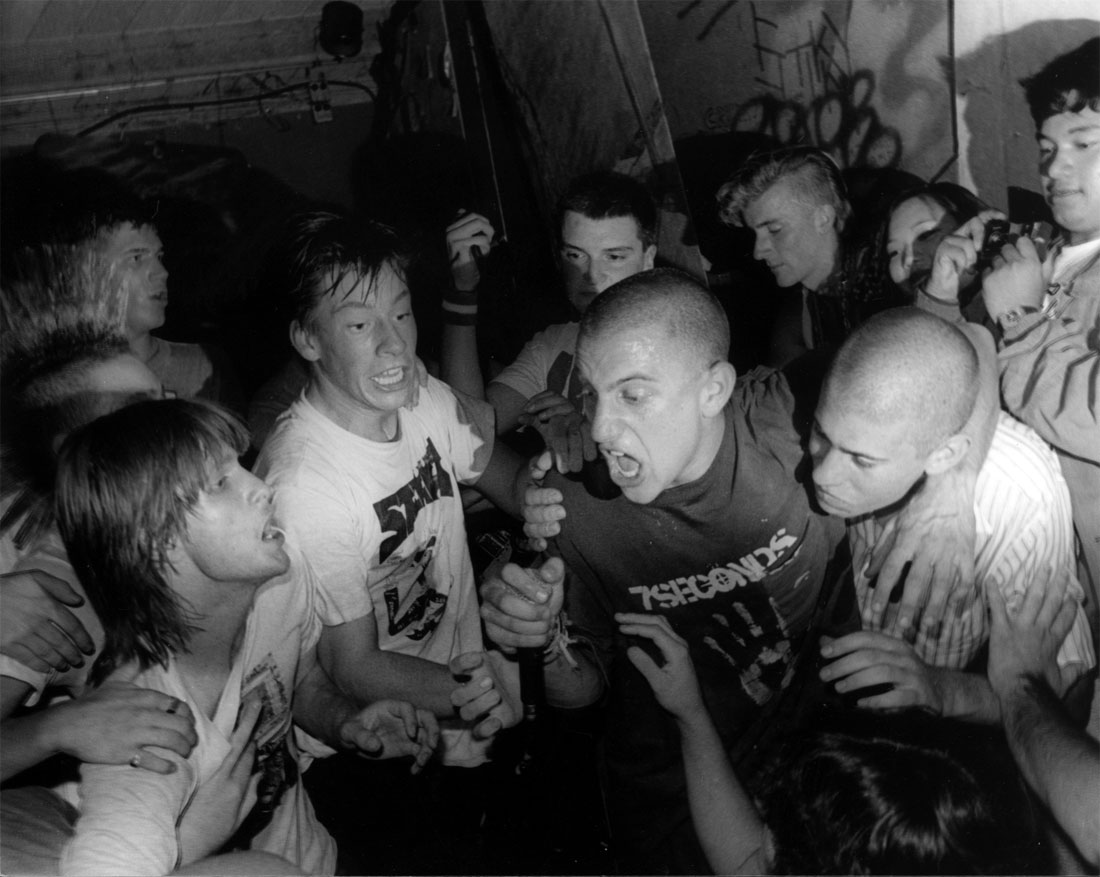Behind the Sound Of American Punk
SPOT, a house engineer and producer for SST Records, gave early ’80s hardcore the space to be itself
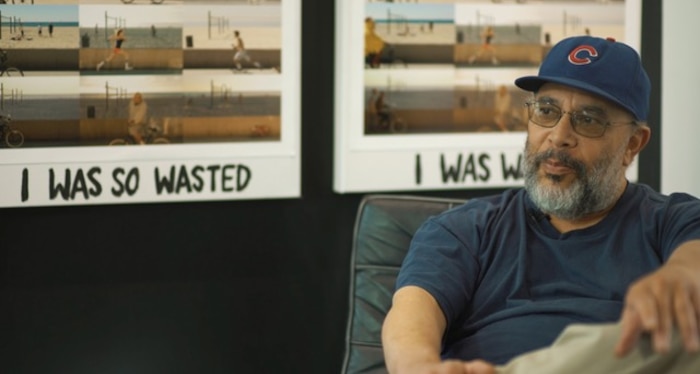
Between 1979 and 1985, Glen Lockett helped define the sound of American punk. Working under the name SPOT, he served as house engineer and producer for the Los Angeles-based SST Records during the years when the label reimagined the underground. Along the way, he brought life to countless records including Black Flag’s hardcore manifesto Damaged, the Descendants’ pop-embracing Milo Goes to College, Hüsker Dü’s gut-wrenching Zen Arcade and Saint Vitus’s self-titled sludge feast Saint Vitus. With this music, SPOT and SST set the stage for the next two decades of rock, influencing everything from pop punk to doom metal.
Despite this pedigree, SPOT doesn’t seem like anyone’s idea of a prototypical punk. An avid roller-skater and photographer, he’s always loved bagpipes, and spent a while in the late ’70s learning to play the clarinet. Really, the idea that such a prototype even exists has been annoying him for the past two or three decades. Speaking over the phone from his house in Wisconsin, SPOT vents some of his frustration with the way his scene has been remembered. “It seems that the whole history of punk rock, and especially the stuff that happened in LA, is based on a lot of myths,” he explains, his voice rising. “There were a lot more influences and ideas about life and culture that most people either don’t have a clue about, or aren’t really all that willing to accept.”
A native of LA, SPOT grew up exposed to the extraordinary variety of sounds flowing through the neighborhoods where he lived. “I’d been raised listening to post-bebop jazz,” he says. “Going back into the ’50s, I’d be at family barbecues where they’re playing Thelonious Monk, and stuff like that.” Getting his first guitar in 1963 at the age of 12, SPOT learned to play along with the torrent of exciting sounds pouring from the AM dial. Surf rock, British Invasion, Motown – all of it was happening at once.
SPOT’s stripped-down production and jazz-derived interest in live performance forced the musicians to work within their means, both sonically and aesthetically.
By the early 1970s, SPOT had fallen in love with the complex musical styles that dominated among the rock-for-arts-sake crowd. “I was really enamored with a lot of what I guess you would call progressive rock,” he says. “That whole era with concept albums, when jazz fusion started happening, before it turned into bullshit.” Playing around Los Angeles, both in bands and as a studio musician, SPOT’s own music stuck closely to this aesthetic, one based on a set of fixed ideas about what was – and was not – quality music. “I was interested in following this path that I thought was the right path. It was about being sophisticated, and really exploring music, and being as good as you possibly could be… without watering it down into something that’s just about making money or being popular.”
By the mid-’70s, SPOT felt this approach growing tired. The early inventiveness that had driven prog and fusion had become overbearing and repetitive. In parallel with his growing disenchantment with a record industry he saw as increasingly categorized and commercial, SPOT’s own attempts to pull together a career playing the music he loved had gone nowhere. “I auditioned once for [Captain] Beefheart. Maybe I could say I almost got into Beefheart!” he laughs. “Finally I just found a situation where some people were building a recording studio [the Media Arts Studio, in Hermosa Beach, California] and I said, ‘Can I help you build it?’”
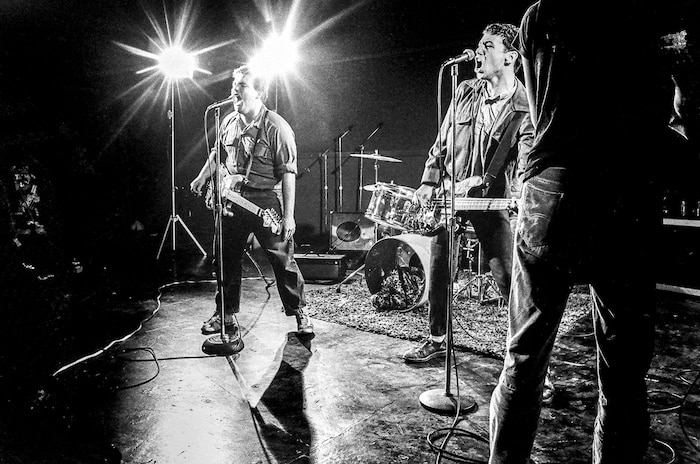
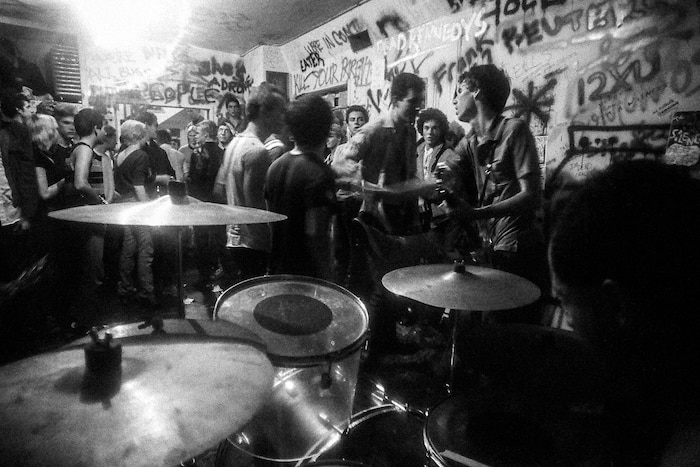
Working at the studio taught SPOT the ropes of recording. Starting as a tape operator, a position he describes as being little more than a glorified remote control, he gradually gained the skills to record sessions on his own. “There were a lot of people,” he says with a sigh, “who had gone through their rock & roll period, and now they were trying to be serious songwriter artists. [They] would just spend all this time doing all of these overdubs on all of these songs that really weren’t that exciting.” The occasional jazz sessions booked at the studio, however, were far more intriguing. Hermosa had a long history with the music – the Lighthouse, a nearby club, had helped make the city a center for West Coast jazz during the ’50s, and, despite its decline, still brought in musicians from across the city. The jazz players that came to Media Arts “didn’t want anything fancy,” SPOT explains. “They just wanted to get the things down, and they didn’t care if someone played a bad note or not.”
That show was just so crazy, I said, “I got to record this band before they get killed.”
Just blocks away from the studio, a bubbling scene of skaters, surfers and musicians had started to develop on Hermosa’s aging beachfront. While waiting tables at a local vegan restaurant for some extra cash, SPOT met Greg Ginn, the guitarist who would go on to found the hardcore pioneers Black Flag. SPOT had been moonlighting as a music critic for the Easy Reader, a local paper, and Ginn, an early punk convert, had strong – and not necessarily positive – thoughts about his taste in records. “I didn’t know what to think of the guy,“ SPOT remembers. “He was telling me about these other bands, and all the things that were starting to happen, and I’m like ‘Well, maybe I should look into this.’”
Intrigued by Ginn, SPOT would occasionally jam with him and the rest of Black Flag at their dilapidated practice space. But it wasn’t until he saw a riot break out during their performance at an outdoor concert in Manhattan Beach’s Polliwog Park that he realized he wanted to produce them. “That show was just so crazy,” he recalls. “I said, ‘I got to record this band before they get killed.’” Recording on the cheap, during off-hours at the studio, the band spent a year working on 1980’s Jealous Again. Featuring a razor-thin sound that complemented guitarist Ginn’s squirming leads and Julio Valencia’s precisely calibrated drum-rolls, the record is Black Flag at its tightest and most aggressive, packing five songs into its six-and-half-minute run time.

Despite Jealous Again’s brevity, the process of recording it was anything but easy. The band was cycling through lead singers, and for months it wasn’t clear who would be the vocalist on the record. To top it off, despite their inexperience, the members of Black Flag believed that they knew how to record better than SPOT did, making the recording process a constant struggle for control. “It was about a year’s worth of wondering if any of this this stuff would come to fruition,” SPOT says. “A lot of head-butting.”
His frustration notwithstanding, SPOT realized that the scene developing around Black Flag offered him something he wasn’t getting anywhere else. “I wasn’t sure what it was,” he remembers, “but it was something new, and I said, ‘Well, I’m going in that direction for now, and I’ll see what happens.’” Jealous Again was the third record on SST, the label that Ginn had created to release Black Flag’s music. Quickly growing to include like-minded groups such as Saccharine Trust and the Minutemen, SST became the center for an innovative strain of working-class punk. To SPOT, these bands echoed the principles of his favorite musicians. “I like listening to really out-there jazz, and all of that progressive stuff where people really took chances. Suddenly, the chances were happening in a different way, but they were big chances that people were taking.”
After its first handful of releases in 1979 and ’80, SST began to expand rapidly, and SPOT was carried along by the momentum. In addition to serving as a soundman for Black Flag’s earliest tours, he also settled into a role as the label’s in-house producer, part of a small team responsible for keeping the business going as it teetered on the brink of financial collapse. “There were no budgets,” he says. “We had to go in there, get things set up quick, go through the tracks quick, and then get the stuff mixed quick, because that was all the time and all the money we had to work with. It had to get done.”
At SST, these financial constraints helped shape a new sound. Recording with bands that were rapidly pushing past the boundaries of hardcore, SPOT’s stripped-down production and jazz-derived interest in live performance forced the musicians to work within their means, both sonically and aesthetically. Moving away from the post-Beatles idea of using the studio as a tool for creating music, SPOT’s production centered on seeing the studio as merely a place to capture it. “Everything was based on the idea of playing the music right when you were playing it live, and then recording that.”
SPOT’s approach enabled a band to translate their well-honed live style to the studio, and it stopped them from producing music they couldn’t take on the road.
Two albums by the Minutemen, a San Pedro trio whose sound was a unique fusion of funk, post-punk, jazz and hardcore, offer some of the best examples of what this kind of production could unlock. Producing Buzz or Howl Under the Influence of Heat and What Makes A Man Start Fires? in 1982 and ’83, SPOT “just set them up the way I thought that they should be set up, turned on the tape and let them go.” Although the records contain jazz-inspired freak-outs and complex, jump-cut maneuvers, their challenging songs never lost touch with the live experience. Working at a breakneck pace, the Minutemen strove to incorporate their politics into every aspect of their music, including its creation. A different recording process, SPOT says, “would have taken the soul away from their art. They weren’t a band that should have been overdubbed.”
Recording bands as they sounded live had other important benefits. In the early ’80s, touring was the only effective way for the underground to build an audience. SPOT’s approach enabled a band to translate their well-honed live style to the studio, and it stopped them from producing music they couldn’t take on the road. “Nobody wanted to do something on a record that you couldn’t reproduce live,” says Dave Chandler, guitarist for the influential doom-metal group Saint Vitus. “All of us had seen too many bands, like Led Zeppelin for instance, where there are all these fancy nine guitars on one song, and then you go to the live show, and the song sucks because they can’t play it like that. None of us, nobody on SST, wanted it to be like that. We wanted people to hear us, like us. Our first record, every song was in one take.”
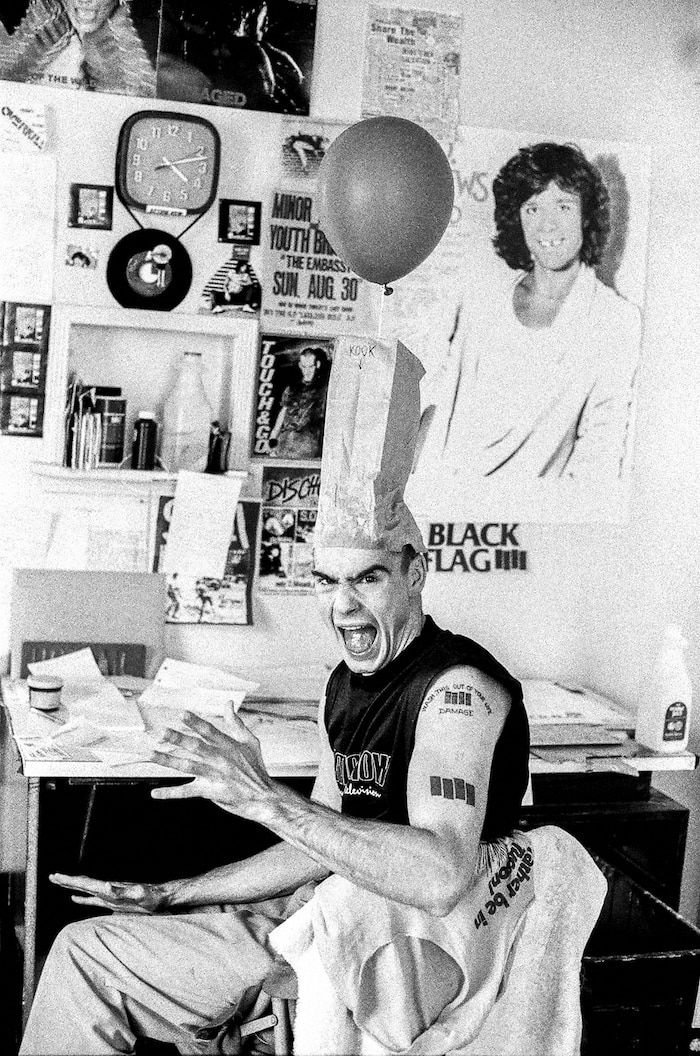

Nonstop touring was also a way for SST bands to discover and sign promising groups from cities across the nation. Of the bands encountered this way, none did more to expand the label’s sound than the Meat Puppets, a Phoenix trio led by the brothers Curt and Cris Kirkwood. Originally playing a style of maniacal, acid-fried hardcore, over three albums produced by SPOT, the group transitioned to the trippy country-rock that would make them underground legends in the ’80s and ’90s. Recording with a band that routinely dropped acid or snorted MDMA before sessions, SPOT worked to elevate the Meat Puppet’s essential looseness. “SPOT had this concept,” explains Derrick Bostrom, the group’s drummer, “which he used to describe our music…which was ‘gelatinous.’ He liked our ‘gelatinous’ vibe, and he was looking for a ‘gelatinous’ sound, which pretty well describes our work with him!”
Besides Black Flag, the SST group whose music reached the largest audience was Hüsker Dü, a Minneapolis trio with a noisily melodic sound that gained fans nationwide in the mid-1980s. The group’s breakthrough, 1984’s Zen Arcade, was an ambitious double album, exploring family trauma, emotional turmoil and social unrest over a loose narrative arc. “The entire session,” SPOT says, “from basic tracks to final mix, was roughly about a hundred hours. Which is not very much time at all. None of it was perfect. But we just had to get it done.” Playing vulnerable, inventive songs with all the fury and desperation of a band that had to get it right this take, Hüsker Dü’s work with SPOT helped set the foundation for the alternative rock boom of the ’90s. It was high art built on an independent budget, and its aesthetic success proved that punk could harness the full vocabulary of emotional life without losing its oppositional identity. While Hüsker Dü would later push back against SST’s insistence on them working with SPOT, eventually winning the right to produce themselves for 1985’s Flip Your Wig, they would never again recapture the roiling power and chaotic intensity he helped them showcased on Zen Arcade.
By the mid-’80s, SPOT felt the underground starting to change. In the wake of the increasing success of bands like Hüsker Dü, the anything-goes attitude that had defined the early days of SST had begun to fade, replaced by a new set of genres and categories. A key moment, SPOT believes, occurred when people “started calling things ‘alternative’… I think it pulled things in the wrong direction. All the things that had been opening up suddenly had to be defined, and not just be what they were.”
At the same time, tensions within SST had begun to tear the label apart. Despite increasing sales, bands complained about not getting paid, while Black Flag’s ambitious schedule of releases absorbed attention and resources from other groups. Eventually, SPOT decided that he was over it. “The dynamic of how the label functioned, under that model, just didn’t work too well. I worked with them until I kinda couldn’t work with them anymore,” he explains. “It’s really sad.”
SPOT left SST and Los Angeles in 1986, and moved to Austin, Texas. With the time to focus on his own music, he found himself drawn to an entirely different style. “One thing Austin had going on was a pretty strong traditional [Irish] scene,” he says. “It was like, Wow! This is almost like going to those punk shows. It was a bunch of people sitting around playing what they wanted to play, the way they wanted to play it. As punk rock and alternative and whatever the fuck you want to call it kept getting bigger and bigger, I was able to jump off of that, into a pool where I could just kind of float, and not have to worry about swimming across the stream this many times in a day.” Only occasionally producing local bands, SPOT has spent recent decades focused on his own art, writing and recording folk and Celtic-influenced albums for his label No Auditions and publishing two well-received books of photography.
Despite almost completely ducking out of the music industry in the late ’80s, SPOT’s impact has only grown in the years since. With his ability to draw brilliant performances from bands on time and under budget, he ensured SST’s enormous artistic legacy, one visible everywhere in the next three decades of rock. Groups as varied as Green Day, Nirvana, Superchunk, Electric Wizard, Modest Mouse and the Red Hot Chili Peppers haved cited albums he produced as major influences, while SST stalwarts like Black Flag and Saccharine Trust remain legendary today, their t-shirts and patches worn by young fans around the world. Working behind the scenes, SPOT was happy to serve as a facilitator, spending long hours striving to make sure that STT’s bands sounded precisely like themselves. By doing so, SPOT helped to create an extraordinary body of work, but at the cost of rendering much of his contribution invisible. Or, at least, mostly invisible.
Whenever he received vinyl copies of his SST records, Saint Vitus guitarist Dave Chandler noticed something mysterious – the run-off grooves at the center of the vinyl had cryptic phrases written on them, things like “Worship Volcanoes on Virgin Knees,” or “Los Alamos: Another Roadside Refraction.” Asked about it, SPOT bursts out laughing. “Well you gotta do that! Look, not every session went the way I wanted it,” he says. “That was my chance to have the last word on every project I did. Any word beyond that just becomes hearsay or fan feelings or reviews or promotion or whatever. Once you finish with one project, you put it away. You just can’t get so caught up on it that you can’t get away from it.”
